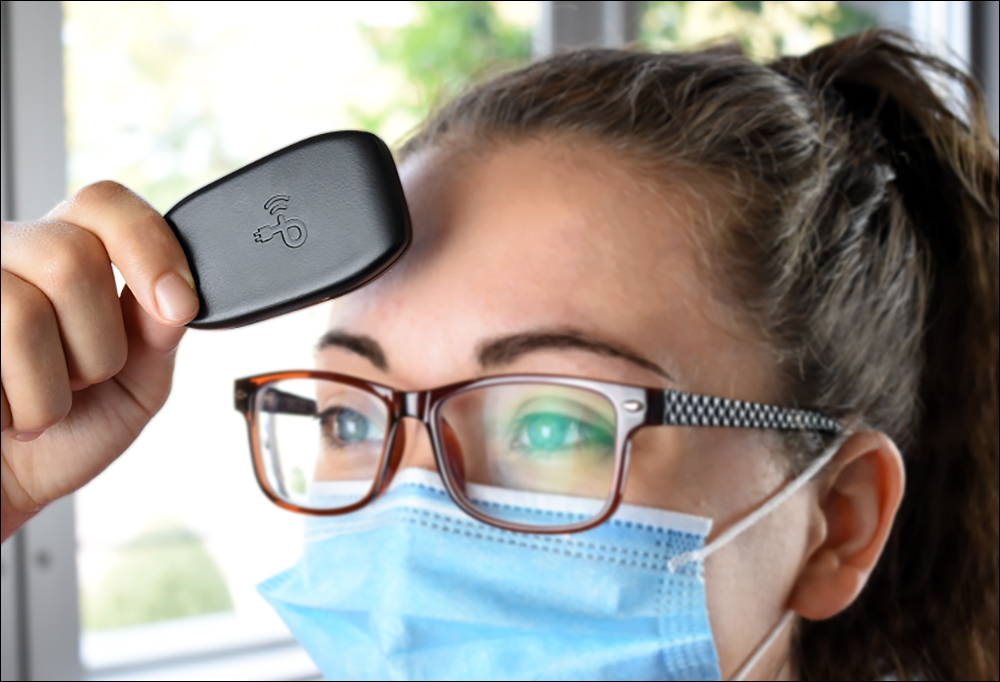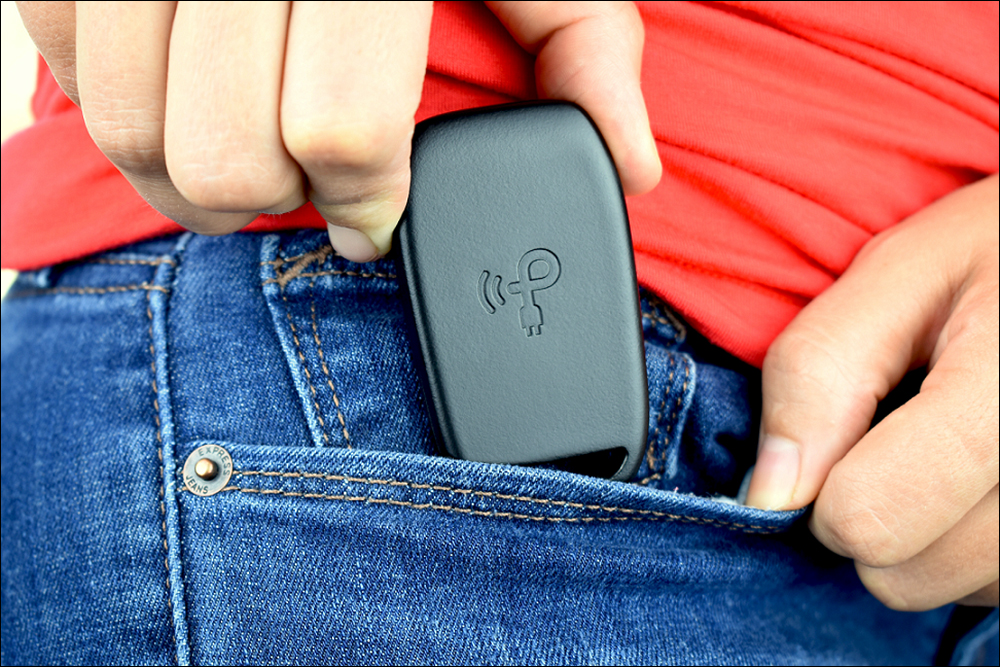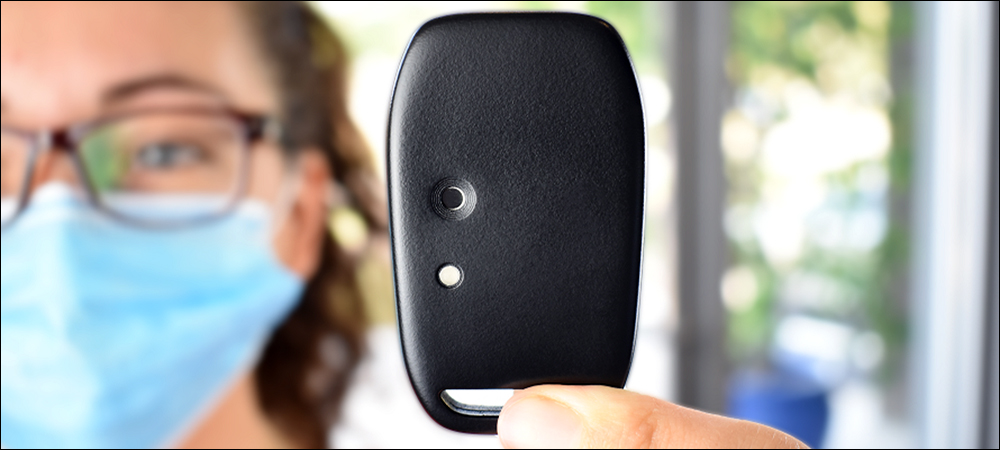Wireless power technology provider Powercast is selling a solution it developed and deployed at its own facility to wirelessly capture the temperatures of employees as they enter the premises, and to identify their locations in some parts of the building. The solution, known as the RFID Temperature Scanning System, employs passive sensors and RF-based power harvesting to enable the company’s workers to scan their own temperature upon arriving at the office, then automatically share that data to ensure they can safely enter. The system also tracks their locations in key public areas for the purpose of contact tracing.
Powercast is demonstrating the technology at this week’s RID Journal Virtually LIVE! conference and exhibition. The company developed the solution to meet safe-work space needs that it found were not being addressed with existing technologies, according to Charles Greene, Powercast’s chief operating and technical officer. While considering how to ensure a safe office environment at its own facility during the COVID-19 pandemic, he says, the firm looked into available technology-based solutions and found shortcomings.

The fob enables workers to check their temperature before entering the building.
Handheld IR temperature scanners require handling by employees, as well as supervision by a dedicated staff member. Individuals are often required to use pen and paper to manually record the scan results, which means handling those implements as well. Other solutions consist of fixed thermal IR cameras that can capture the temperatures of individuals who come within range, and then determine if anyone has a fever. “The problem with IR cameras is they don’t uniquely identify the employee,” Greene says.
Without a dedicated staff member watching the entrance, Greene says, it would be difficult to know who displayed a temperature above 100.4 degrees Fahrenheit (indicating a fever), and thereby ensure that person was properly alerted and sent for testing. Cameras alone do not provide location data, he notes, adding, “Once they are in the building, I don’t know anything about where they went.”

Charles Greene
Powercast also wanted to leverage RFID for contact-tracing purposes. In that way, if an employee were to test positive for COVID-19, the company would want to be able to identify who may have been in contact with that person throughout the prior two weeks. Therefore, the Pittsburgh-based company built a solution using RFID, IR temperature sensors and its own power-harvesting technology.
Powercast was launched in 2003 to build solutions to charge the batteries of wireless devices over the air via RF signals. Traditionally, the firm has focused on products that harvest RF signals for the industrial or commercial market. For instance, it offers a solution for powering devices used by heating, ventilation and air conditioning (HVAC) products (see Powercast Debuts Energy-Harvesting Wireless Sensor System).
Since the company already builds wireless power-harvesting systems, Greene says, “We saw an opportunity here to build a system in which everyone has their own unique temperatures scanner on their keys, and then they’re not touching something someone else has touched.” For the temperature-scanning solution, the company built a key fob that can be carried by each employee, which comes with a built-in RFID tag and an IR temperature scanner. An RFID reader and TV monitor are installed at the front door. Several RFID readers are also deployed at key locations inside the building.
The fob comes with a passive UHF RFID tag leveraging NXP‘s UCODE chip. The unique ID number encoded on each chip is linked in Powercast’s database to the specific individual to which the fob is assigned. The fob contains a Powercast Powerharvester receiver, a power-harvesting chip, and a Microchip Technology microcontroller and temperature sensor for performing temperature readings. It also includes an LED light. Each time an employee reports to work, he or she must first approach the front desk, where a desktop RFID reader is installed alongside the TV monitor. The worker holds the key fob near the reader, which captures the unique ID linked to that individual in the tag. Simultaneously, the system sends power with the interrogation stored on the fob.
The LED light shines green on the key fob indicates that the employee can now take a temperature scan. As the worker places the fob near his or her forehead, it lights up a second time as the temperature reading is captured using the power harvested from the reader. Lastly, the employee taps the key fob again against the reader, at which point its antenna captures that data and the software displays the result on the screen, along with the individual’s name. If the temperature falls below 100.3 degrees, the individual is invited to enter the building; otherwise, he or she is advised not to do so.

Each worker carries his or her fob throughout the day in a pocket.
Two Zebra RFID reader portals are installed inside the building, one in a high bay area and the other in a meeting room. Each worker carries his or her fob throughout the day in a pocket. If someone enters a public area in which a portal is installed, that reader will capture the individual’s unique ID and update the software to indicate who has entered. A temperature reading is not taken, however. The collected data is used only for contact tracing, Greene says.
If an individual tests positive for COVID-19, that information is then shared with management, who can access the system and view the times at which that individual was in the RFID read-enabled locations, as well as anyone else who might have been there. Those individuals who may be at risk can then be contacted. The solution has been in place for several weeks at the building, located in Pittsburgh’s RIDC Park. The company had captured 300 employee temperature readings by the time it announced the solution, and the firm has not had any positive COVID-19 results so far. “Luckily, everything’s been negative,” Greene reports.
Powercast plans to sell the key fobs and provide software for smaller companies that lack access-management software or a systems integrator. “We wrote the software we are using in our lobby,” Greene says. The technology can also be built into existing access-management systems that companies may be using, along with an application programming interface. The system works with any off-the-shelf-reader, he adds, as long as it supports the Low-Level Reader Protocol (LLRP).
Powercast is presently in conversations with several companies that are interested in deploying its technology, as well as some potential partners. Initially, Greene says, the solution may be most commonly deployed by large firms featuring campuses, multiple buildings or access-control systems, while Powercast also intends to offer the system (with or without software) to medium-sized or smaller businesses. “It really could be any type of facility,” he states, including factories, government buildings or offices. What’s more, the company could offer the technology in an ID card or a wristband.
The solution may enable companies to meet state health requirements as their employees return to work following quarantines. In the future, Greene predicts, the system could be used for building automation as well. “The platform is scalable into other things in the future,” he says, such as temperatures, lighting or occupancy.


